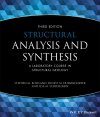![Structural Analysis and Synthesis Structural Analysis and Synthesis]()
Click to have a closer look
About this book
Contents
Biography
Related titles
About this book
This widely used, highly readable introduction to structural analysis is specifically designed to support the laboratory work of undergraduates in structural geology courses. Throughout the book, a geologic map from a mythical site, the Bree Creek Quadrangle, is used to help students analyze various aspects of the geologic structures exposed within this quadrangle, and ultimately to combine these analyzes into a grand synthesis.
Guided by students' and instructors' suggestions, the authors have refined several exercises and added new ones for this third edition. In addition, every figure has been redrafted to improve clarity, and the Bree Creek Quadrangle map has been compiled onto a single fold-out sheet.
Contents
Preface Read this First 1. Attitudes of Lines and Planes Objectives Apparent-dip problems Orthographic projection Trigonometric solutions Alignment diagrams 2. Outcrop Patterns and Structure Contours Objectives Structure contours The three-point problem Determining outcrop patterns with structure contours Bree Creek Quadrangle map 3. Interpretation of Geologic Maps Objectives Determining exact attitudes from outcrop patterns Determining stratigraphic thickness in flat terrain Determining stratigraphic thickness on slopes Determining stratigraphic thickness by orthographic projection Determining the nature of contacts Constructing a stratigraphic column 4. Geologic Structure Sections Objective Structure sections of folded layers Structure sections of intrusive bodies The arc method Drawing a topographic profile Structure-section format 5. Stereographic Projection Objective A plane A line Pole of a plane Line of intersection of two planes Angles within a plane True dip from strike and apparent dip Strike and dip from two apparent dips Rotation of lines The two-tilt problem Cones: the drill-hole problem 6. Folds Objectives Fold classification based on dip isogons Outcrop patterns of folds Down-plunge viewing 7. Stereographic Analysis of Folded Rocks Objectives Beta diagrams Pi diagrams Determining the orientation of the axial plane Constructing the profile of a fold exposed in flat terrain Simple equal-area diagrams of fold orientation Contour diagrams Determining the Fold style and interlimb angle from contoured pi diagrams 8. Parasitic Folds, Axial-Planar Foliations, and Superposed Folds Objectives Parastic folds Axial-planar foliations Superposed folds 9. Faults Objectives Measuring slip Rotational (scissor) faulting Tilting of fault blocks Map patterns of faults Timing of faults 10. Dynamic and Kinematic Analysis of Faults Objectives Dynamic analysis Kinematic analysis 11. A Structural Synthesis Objective Structural synthesis of the Bree Creek Quadrangle Writing style Common errors in geologic reports 12. Rheologic Models Objective Equipment required for this chapter Elastic deformation: instantaneous, recoverable strain Viscous deformation: continuous strain under any stress Plastic deformation: continuous strain above a yield stress Elasticoplastic deformation Elasticoviscous deformation Firmoviscous deformation Within every rock is a little dashpot 13. Brittle Failure Objective Equipment required for this chapter Quantifying two-dimensional stress The Mohr diagram The Mohr circle of stress The failure envelope The importance of pore pressure 14. Strain Measurement Objectives Equipment required for this chapter Longitudinal strain Shear strain The strain ellipse Three strain fields The coaxial deformation path The coaxial total strain ellipse Noncoaxial strain The noncoaxial total strain ellipse Deformed fossils as strain indicators Strain in three dimensions Quantifying the strain ellipsoid 15. Construction of Balanced Cross Sections Objectives Thrust-belt "rules" Recognizing ramps and flats Relations between folds and thrusts Requirements of a balanced cross section Constructing a restored cross section Constructing a balanced cross section 16. Deformation Mechanisms and Microstructures Objectives Deformation mechanisms Fault rocks Kinemative indicators S-C fabrics Asymmetric porphyroclasts Oblique grain shapes in recrystallized quartz aggregates Antithetic shears 17. Introduction to Plate Tectonics Objectives Fundamental principles Plate boundaries Triple junctions Focal-mechanism solutions ("beach-ball" diagrams) Earth magnetism Apparent polar wander Appendices A: Measuring attitudes with a Brunton compass B: Geologic timescale C: Greek letters and their use in this book D: Graph for determining exaggerated dips on structure sections with vertical exaggeration E: Conversion factors F: Common symbols used on geologic maps G: Diagrams for use in problems References Further Reading Index
Customer Reviews
Biography
Stephen M. Rowland is a Professor of Geology at the University of Nevada, Las Vegas. He began teaching a structural geology laboratory course as a PhD student at the University of California, Santa Cruz. The Bree Creek map and the core exercises in this book evolved from field exercises in the Santa Cruz Mountains of California. Ernest M. Duebendorfer is a Professor of Geology at Northern Arizona University in Flagstaff. His research focuses on Proterozoic accretionary tectonics and Cenozoic extensional tectonism in the western US. He has also published papers on contractional deformation in Antarctica, Australia, and California. He received his PhD from the University of Wyoming. Ilsa M. Schiefelbein is a Senior Geologist currently employed by ExxonMobil Corporation in Houston, Texas. She received an MS at the University of Nevada, Las Vegas where she studied extensional tectonics in the Basin and Range Province and taught structural geology laboratories.



































